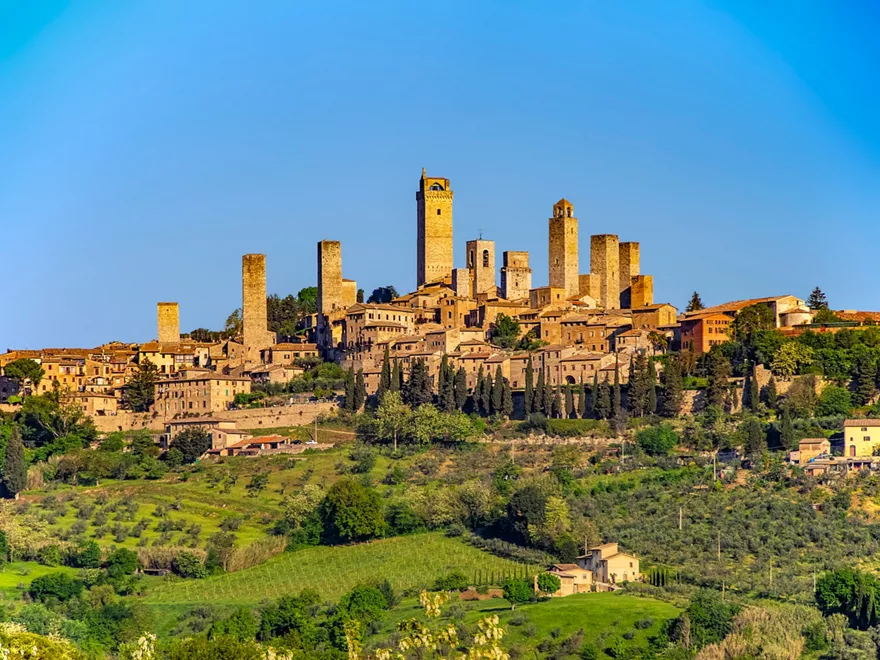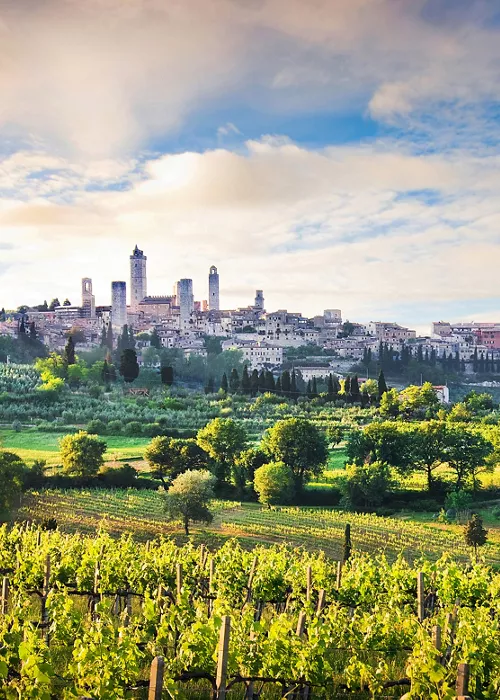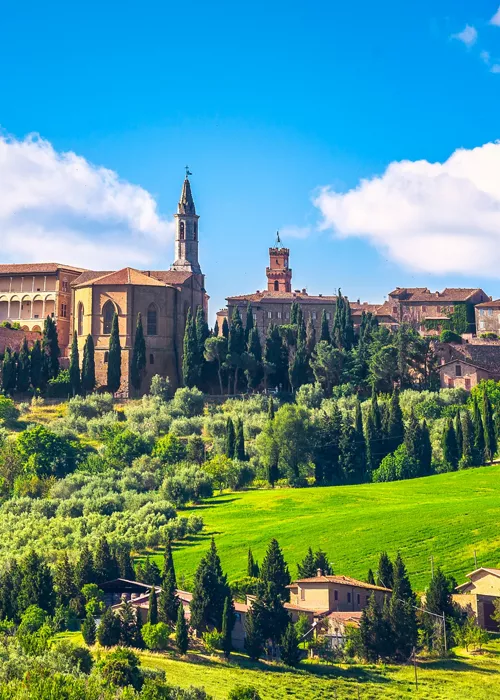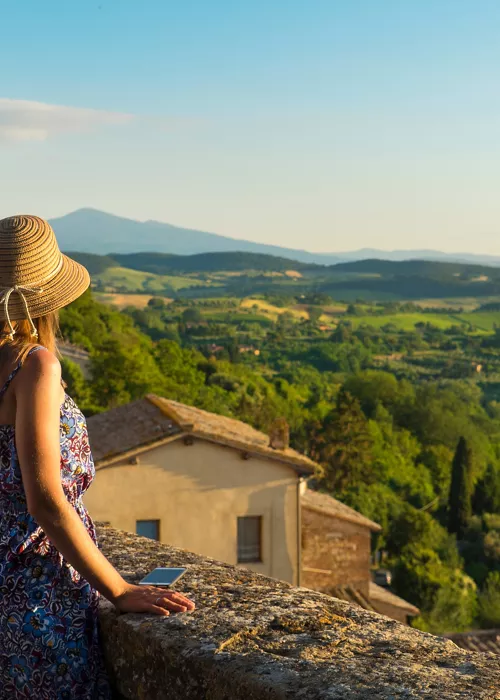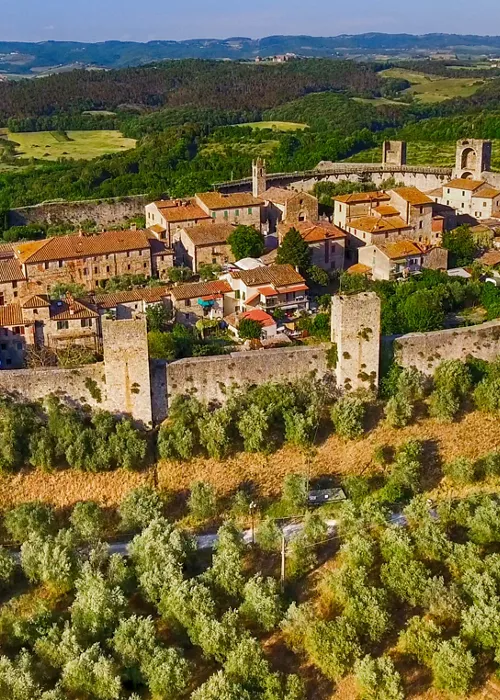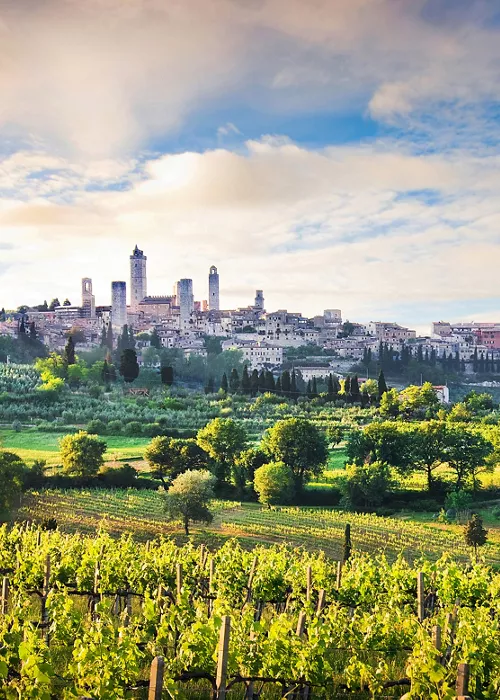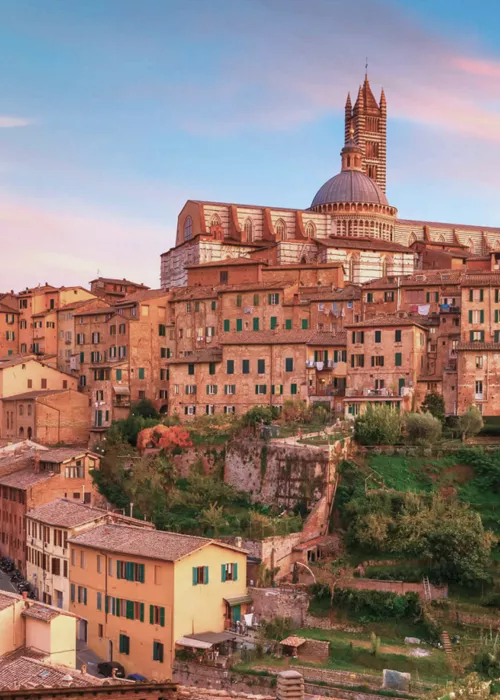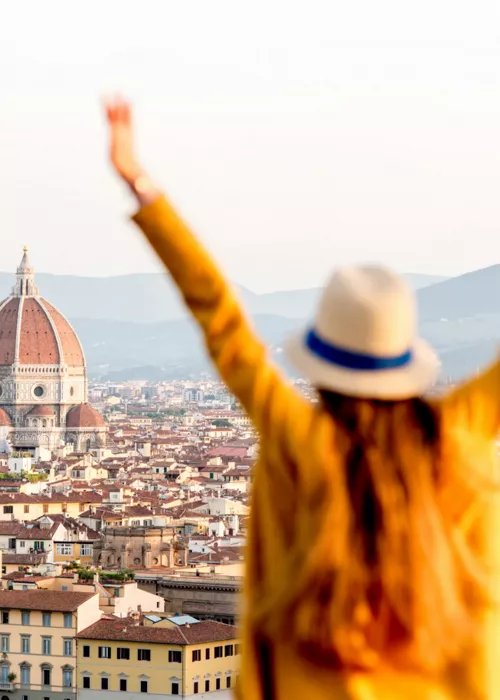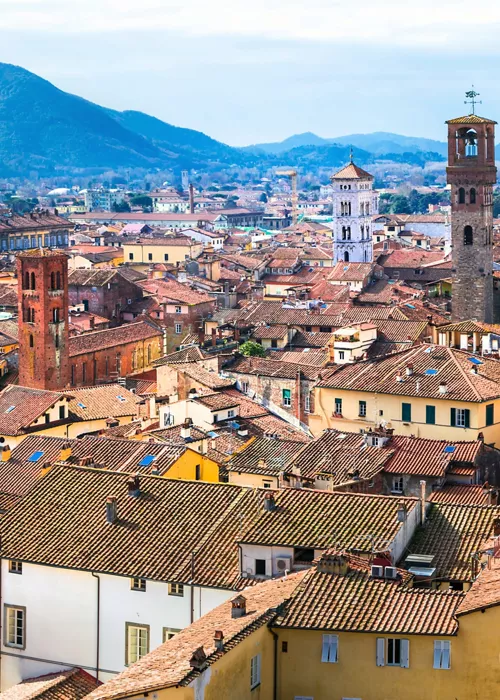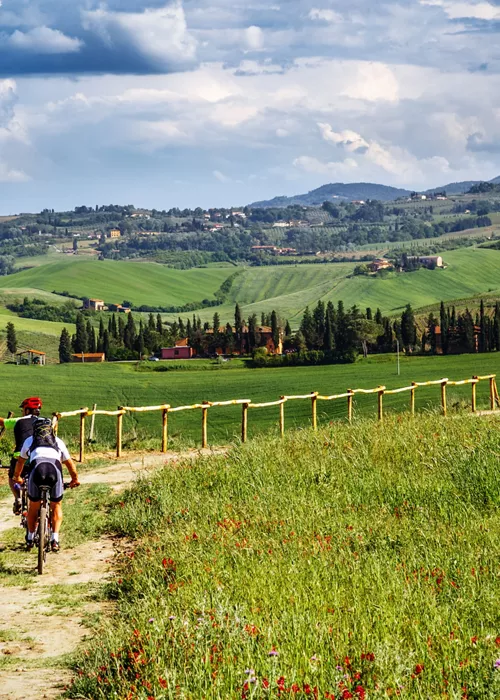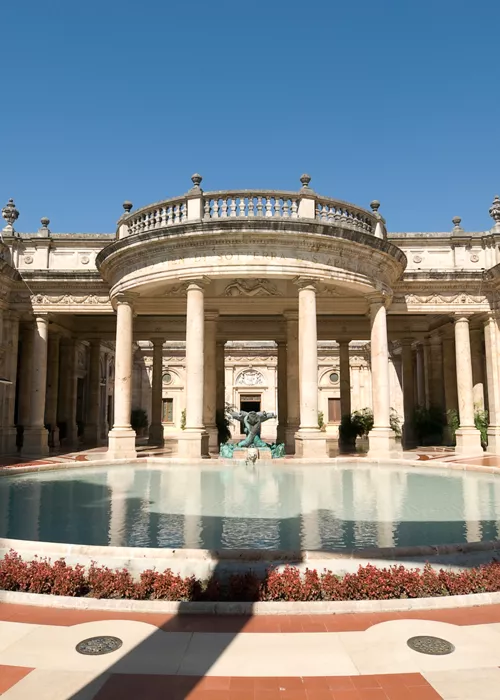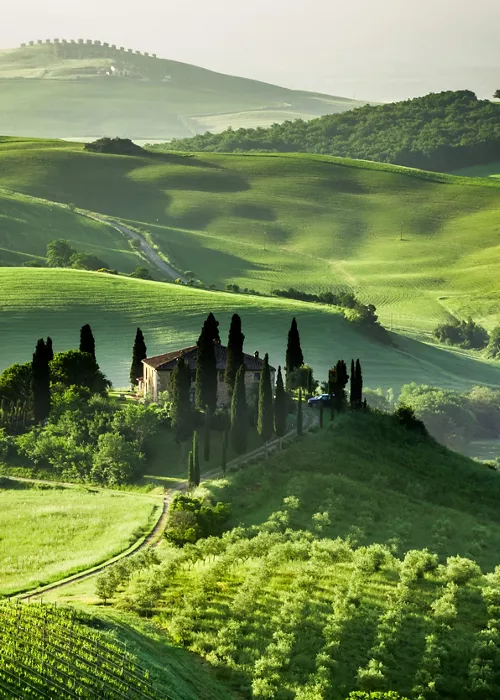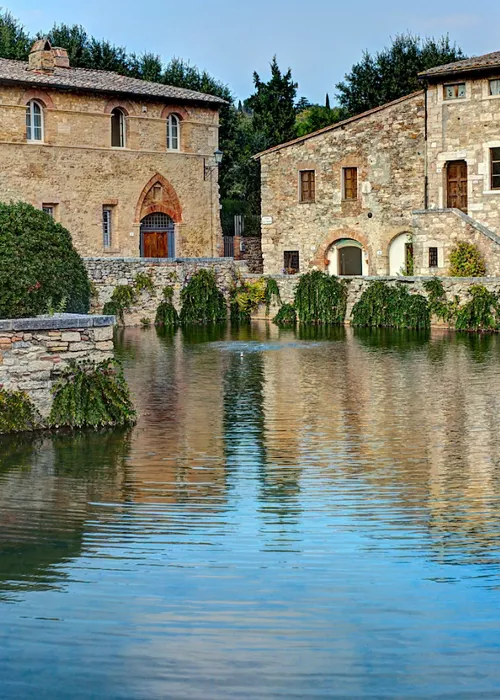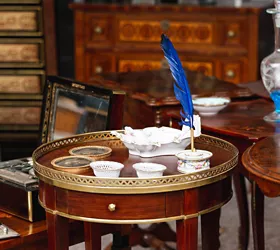San Gimignano, the city of 14 towers
3 minutes
There are so many expressions used to describe San Gimignano, the most original of the Italian cities of the Middle Ages due to the quantity of soaring towers.
This is a snapshot of the past that has survived intact to the present day, with perfect forms, a repository of sublime art treasures from every era, immersed in a fairytale landscape.
The towers, an everlasting symbol of power
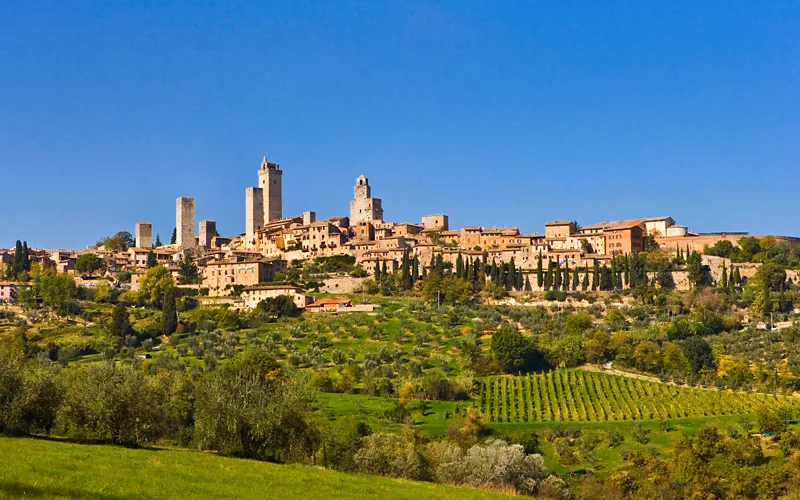
The San Gimignano we know today is a city that reached the height of its economic might in the second half of the 13th century, thanks to the trade in agricultural products facilitated by the presence of the Via Francigena. Among the most sought-after goods in San Gimignano was saffron, which was sold in Italy as well as abroad and is still produced there today.
Prosperity from trade allowed some families to amass large fortunes that were also measured by the height of the towers. San Gimignano eventually came to have 72, of which only 14 remain today. The highest, at 52 metres, is the Torre Grossa (also known as the Torre del Podestà, or the Rognosa, built in 1311), next to the Palazzo Comunale in Piazza Duomo.
By law, no tower could be higher than that expression of political power, but in Piazza della Cisterna, at its corner with Piazza Duomo, the Ardinghelli family dared to challenge the established order with two much taller twin towers, later “shortened”, as we can see them now. The Campatelli tower, in Via San Giovanni, part of the Fai heritage, is one of the few tower-houses open to the public.
The Palazzo Comunale
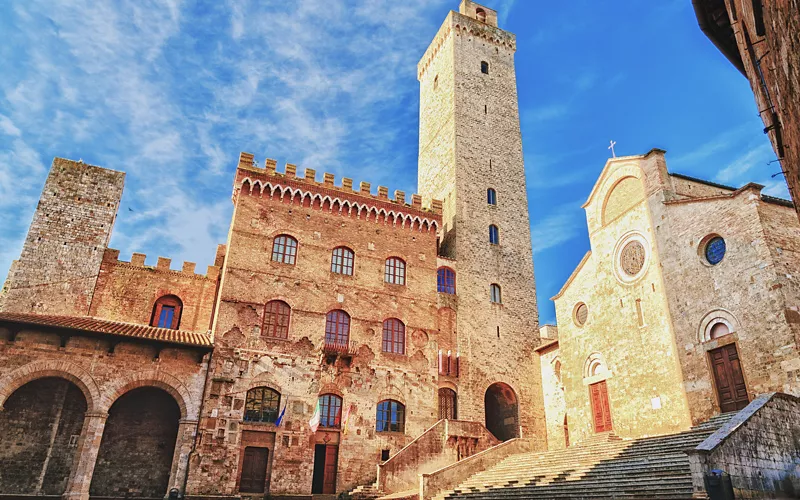
The Palazzo Comunale (Town Hall), in Piazza del Duomo, is home to the headquarters of the San Gimignano Civic Museums with its Sala del Consiglio (Council Chamber), also known as the Sala di Dante (Dante's Room), in honour of the great poet's visit in 1299.
The room features a cycle of frescoes attributed to Azzo di Masetto circa 1290 depicting knights' tournaments and hunting scenes dedicated to Charles of Anjou. In the same room is the Madonna in Majesty by Lippo Memmi, a Sienese painter who was inspired by Simone Martini's Majesty in the Palazzo Pubblico in Siena.
On the second floor, incorporated in the Torre Grossa, is the Camera del Podestà, with intriguing frescoes on a profane theme attributed to Memmo di Filippuccio, warning the podestà (chief magistrate) against corruption, represented as a female temptress.
The Palazzo also houses a splendid Pinacoteca (picture gallery), with some of the greatest masterpieces by Sienese and Florentine painters from the 13th to the 15th century: from Filippino Lippi, with a pair of tondi depicting the Annunciation, to Benozzo Gozzoli, from Benedetto da Maiano to Pinturicchio.
The Cathedral of San Gimignano
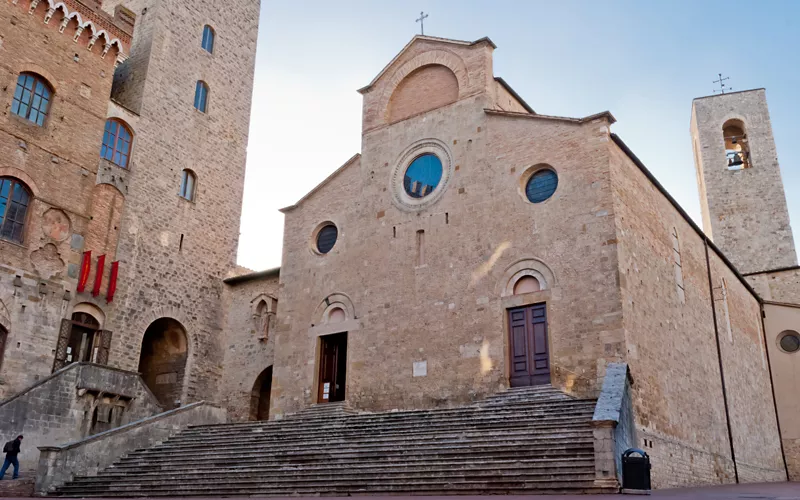
The three-nave cathedral of San Gimignano, with its splendid cross vaults painted in blue, is a treasure trove of masterpieces. The walls feature frescoes depicting the Stories of the Old and New Testaments by illustrious painters of the 14th-century Sienese school, Lippo and Federico Memmi and Bartolo di Fredi. At the end of the right hand nave, visitors can also admire a jewel of the Renaissance, the Chapel of Santa Fina (1475), by Giuliano and Benedetto da Maiano, with a cycle of frescoes by the Florentine painter Domenico Ghirlandaio.
The Santa Chiara Conservatory complex
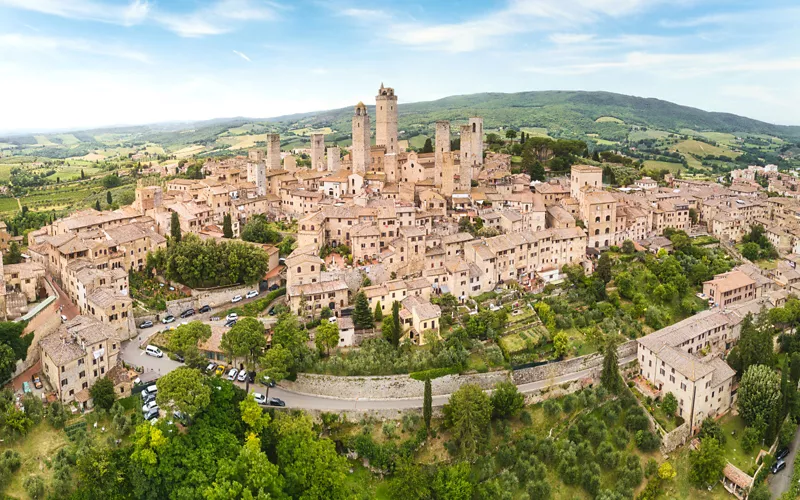
The museum complex of the former Conservatorio di Santa Chiara houses the Speziera di Santa Fina, which contains a fine collection of apothecary vases from the hospital of San Gimignano founded in 1253. The same complex also houses the Archaeological Museum, with Etruscan, Roman and mediaeval finds from the area, and the Raffaele De Grada Gallery of Modern and Contemporary Art.
The treasures of the Church of Sant'Agostino

Among the many treasures of San Gimignano, the church of Sant'Agostino, one of the most beautiful in Tuscany, should not be overlooked: the majolica floor is the work of Andrea della Robbia, the chapel of San Bartolo is by Benedetto da Maiano, the high altar houses the Coronation of Mary by Pollaiolo, while in the choir chapel one can admire a cycle of frescoes by Benozzo Gozzoli on the life of Saint Augustine.
The contemporary world of Galleria Continua
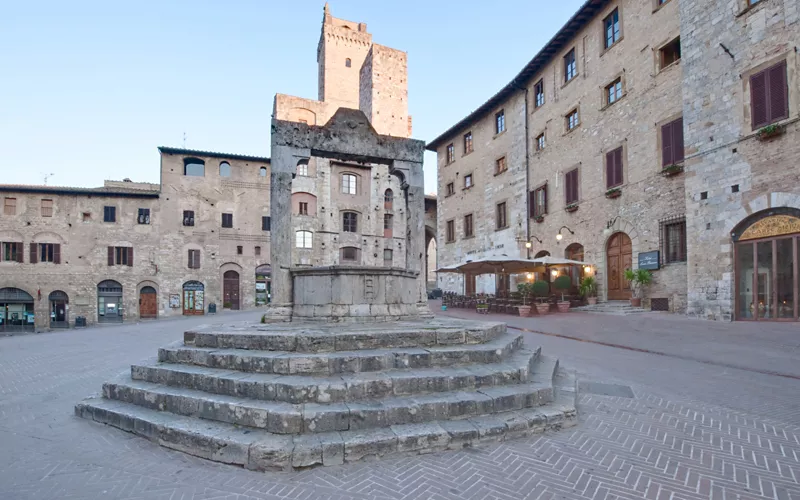
A place so steeped in art can only continue to also be an inspiration for contemporary art. Just a few steps from Piazza della Cisterna you will find Galleria Continua, one of the most established venues of contemporary art, with locations also in Paris, Beijing, Havana, and Dubai. It was founded by three people from San Gimignano who wanted to perpetuate the artistic aspect of the village. Since 1990, Galleria Continua has presented exhibitions of major contemporary artists from all over the world in the premises converted from a cinema-theatre.

